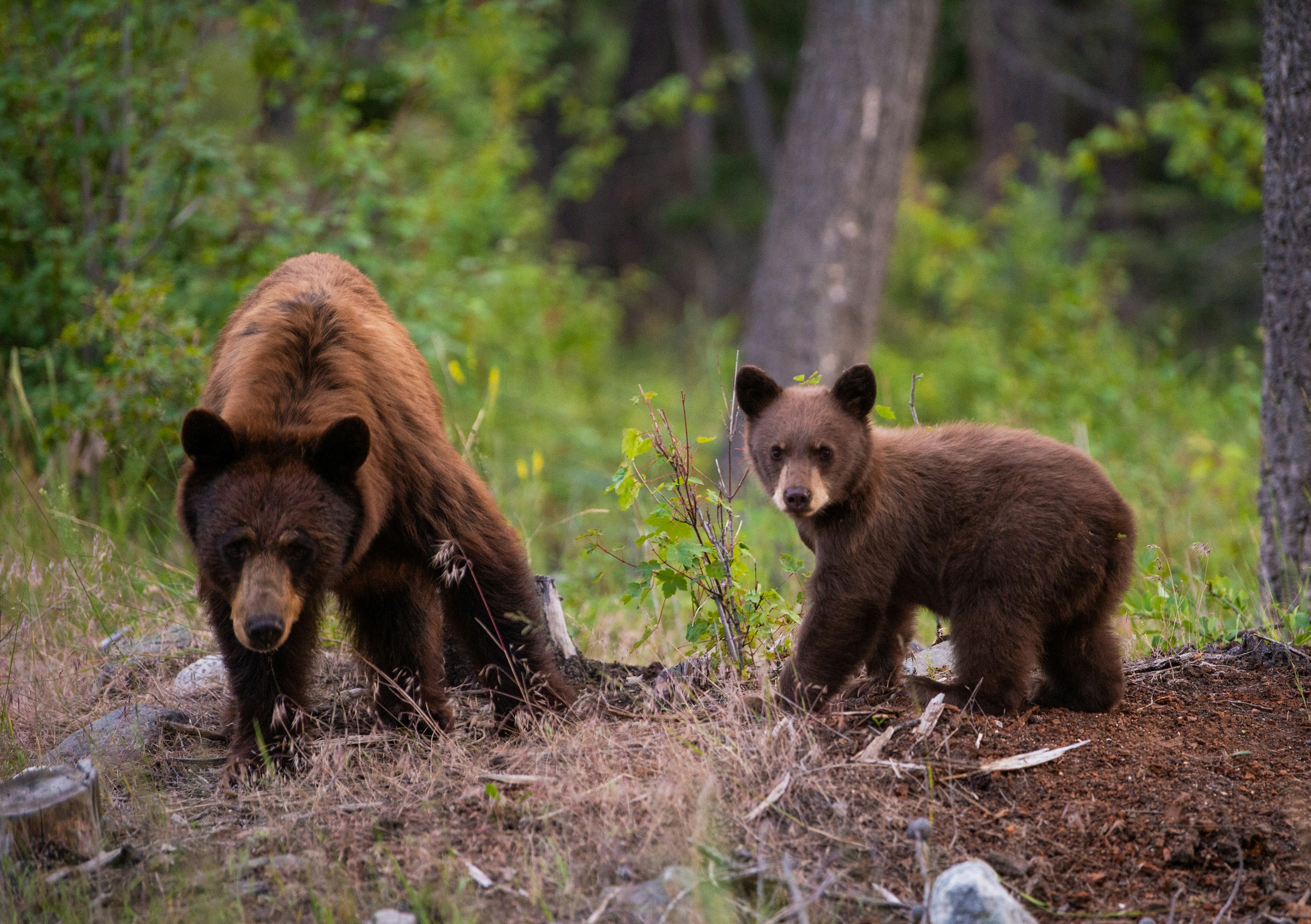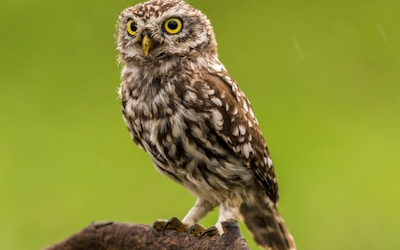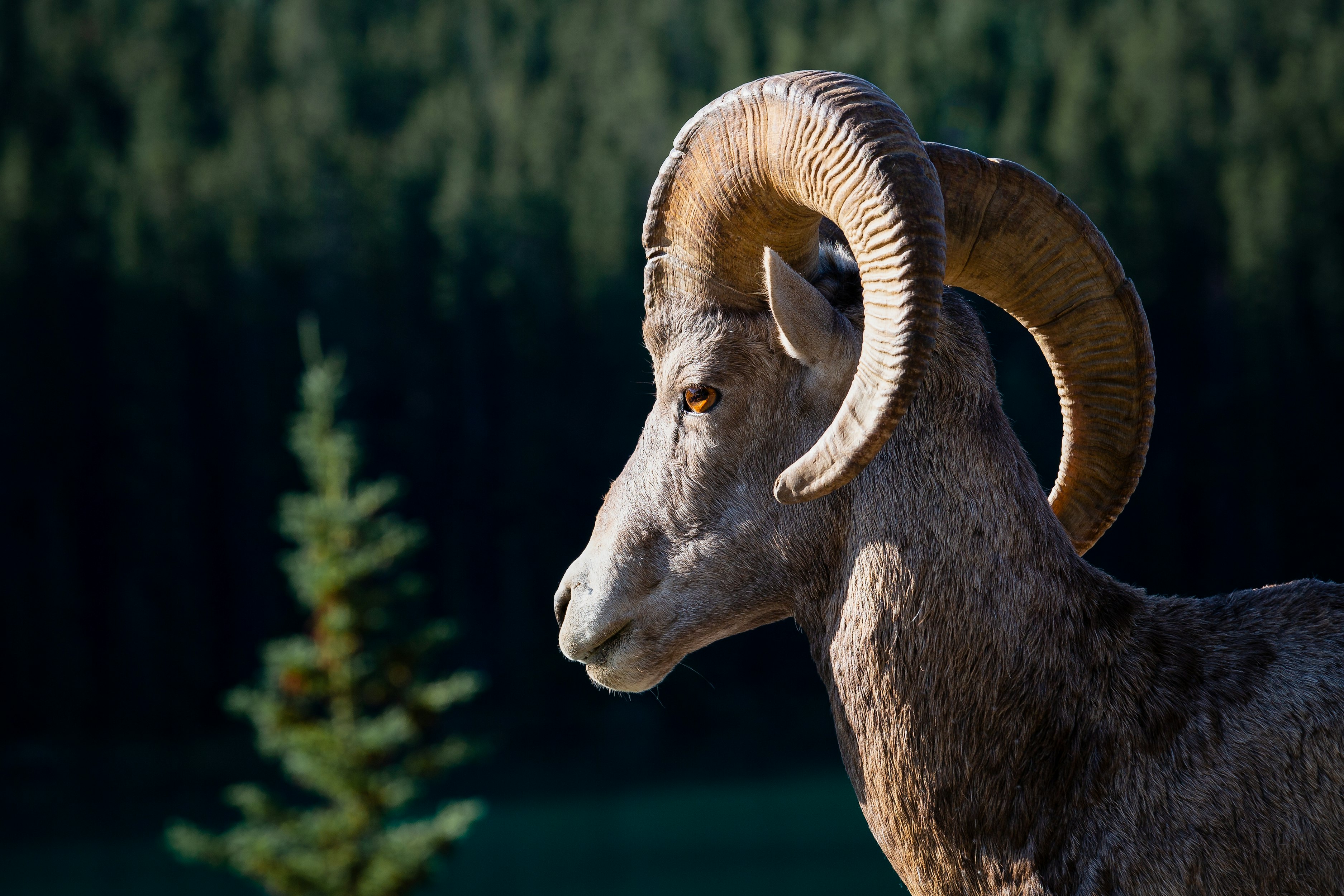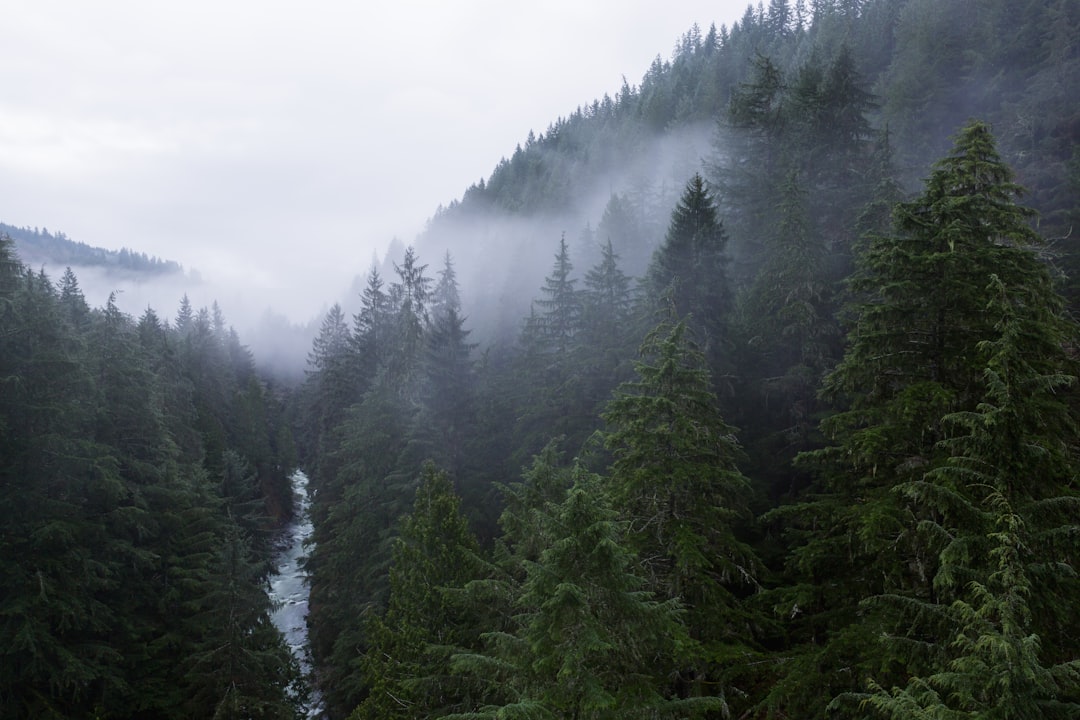Who’s Killing the Grizzly Bears of Fremont County?
Grizzly bears are not “endangered” as that term is defined by the Endangered Species Act. But, because their restoration has been so successful, they are increasingly in danger from poachers and people who are afraid of them.
Bears, including grizzlies, are smart. Moderate hunting makes them very wary of humans. This reduces bear-human conflict and makes bears less vulnerable to poaching.
Despite its good intentions, the prohibition of even limited grizzly bear hunting goes against millions of years of co-evolution of bears and humans and is placing all grizzly bears in increasing danger.
NOTE: this article was originally published to Washington Post’s Apple News Channel on November 30, 2021. It was written by Natalie Schachar, a journalist in Victor, Idaho. Natalie Behring is a photojournalist based in Victor. This story is set in Fremont County (population 13,000), which has one weekly paper, the Island Park News. Portraits were taken with a trail camera.
When three bears were killed in less than a year, an Idaho community knew something was wrong.
It was still frigid this past mid-March when the female grizzly in Idaho’s Island Park area shook off her slumber and left the den, her 6-to-8-week-old cub anxiously awaiting its mother’s return. The elder’s fur was thick, her stride heavy. Most likely, she was crossing the snow-covered landscape in search of early spring vegetation or a fresh kill when the shooter raised their weapon and took aim, pouring multiple bullets into her flesh. Perhaps she stumbled forward or back, or sought to soothe her wounds in the cool waters of the Little Warm River, some 10 miles from Yellowstone National Park as the crow flies.
When authorities picked up a mortality signal from the grizzly’s collar on a routine flyover and proceeded to investigate, they were taken aback by what they saw: The grizzly’s carcass was partially submerged in the river, scavenged by wild animals. Her cub had succumbed to hypothermia or starvation back in the den. “Obviously, it’s never a good thing when we find the animal we’re looking for is dead, so, yeah, definitely surprising,” said James Brower, spokesman for the Upper Snake Region of the Idaho Department of Fish and Game. “Then all sorts of things go through your head. What may have happened, trying to put together a scene.”
The killing was a brazen thing to do, people in Island Park agreed. Some called it “terrible” and “amoral” and “sad” and “a shame.” Mayor Mike Bogden took to Facebook, writing on the city’s official page: “This is not the way we deal with the wildlife in Island Park!”
Jerry Fyfe, 70, at the bar at Lakeside Lodge and Resort, called it “just out-and-out flat wrong.” And Reeca Marotz, the only city employee, voiced some version of a prayer: “I just hope it’s not somebody from the area,” she said. “That’s just not the values that are in place up here.”
Most grizzlies live well into old age and die of natural causes. Seldom are they shot dead, and very rarely is one struck by so many rounds. But the shooting was troubling for another reason as well: The grizzly was the third killed in the Island Park area in less than a year.
Two others had been killed just months prior in the fall, when bears were fattening up and healthy before the start of a long winter. The first, a 20-year-old adult male, was found in October 2020 near Coyote Meadows, its side punctured by the bullet of a high-powered rifle. A month passed, the temperature dropped below freezing and rose back above, and then another was found near Cold Springs Road, shot broadside. Fish and Game authorities could conclude only that it had been dead for days, but the fluctuating weather made it difficult to determine the exact timing of the incident. “The hardest thing is when another one happens, you’re like, ‘Oh God, there it goes again,’ ” said Kathy Rinaldi, Idaho conservation coordinator for the Greater Yellowstone Coalition, a nonprofit that operates in the area. “When they’re coming in frequently, then it starts a little bit to get some more attention.”
Hunting is prohibited in the national park. But in the greater Yellowstone ecosystem, you can hunt big game like deer and mountain lions and wolves. You can also hunt cranes and waterfowl and squirrels and rabbits. You cannot, however, hunt a grizzly, with its distinctive shoulder hump and rounded ears. Grizzlies are one of the few animals in the area protected as a threatened species by federal law; a grizzly killing is allowed only if in proven self-defense or the defense of others and reported within five days. Otherwise, killing a grizzly bear is punishable with fines up to $50,000 and a year in prison. Someone was flouting the law.
Island Park, Idaho, sits at the bottom of a volcanic caldera in the northeastern part of the Snake River Plain. As of the last census, the population within the technical limits of Island Park had fallen below 200 — from a previous count of 286 in 2010 — for the first time in recent memory. Practically speaking, locals consider Island Park to be a vast area of timbered hills and valleys stretching 30 miles north-south through Fremont County and a clear 18 miles across it. Most put the year-round population in the greater caldera at upward of 500, and make note of the tens of thousands of tourists who pass through en route to the national park.
Island Park has temperatures occasionally colder than Antarctica and “some of the gosh-darndest weather you ever saw,” according to the locally authored “History of Island Park.” It also has grizzlies.
Throughout the late 1800s, settlers cleared the predator from the surrounding habitat to protect themselves and their livestock, contributing to the near decimation of the grizzly’s population in the contiguous United States. But the story of the Yellowstone grizzlies long ago flipped into one of conservation success. From a population of just 136 in 1975, when grizzlies of the Greater Yellowstone Ecosystem were first listed as a threatened species, approximately 700 now occupy an increasingly extensive range of over 25,000 square miles. By some estimates, about 70 to 80 of those move through Island Park and the Idaho portion of the national park, which stretches through Fremont County.
Most everyone in Island Park has a grizzly story. One woman recalled locking eyes with a grizzly after she walked outside to retrieve her son’s dogs. Another man experienced sheer terror as a grizzly chased him on his bike. Rich Paini, co-owner of fly-fishing lodge TroutHunter, was bow hunting for elk when a male grizzly charged toward him at full speed. It happened in a matter of seconds, but he remembers it in slow motion. The creature was beautiful, dark-colored, sun-soaked. “For a moment, there was no fear. It was just awe,” he recalled. He had enough time to yell “Bear!” before the adult grizzly, weighing an estimated 600-plus pounds, pummeled him to the ground and bit through bone. Paini walked away but lost the ring finger of his left hand.
Hikers and hunters who unknowingly walk between a grizzly and its prey, or a sow and her cubs, are most at risk. In the Idaho portion of the Greater Yellowstone Ecosystem, some 32 human-grizzly conflicts were recorded in 2018, up from a single interaction in 2000. But unprovoked attacks were rare, and the state of Idaho has not reported a single grizzly-inflicted fatality in modern times. (This year, however, a man was killed by a grizzly across the state line in Montana, 30 miles from Island Park.) Most grizzlies avoid humans entirely.
“They’re just a very special creature,” said Paini. “It’s kind of the alpha animal.” And yet, while grizzlies don’t spark the same ire reserved for wolves, there is still a delicate balance between establishing a secure habitat for the predator and figuring out how to live alongside it.
Drawn by a love of the outdoors, seasonal residents and vacationers arrive in early spring and summer in droves to be near the last relatively wild ecosystem in the United States’ temperate zones. And growth is everywhere. In 2021, Fremont County is expected to issue a high of 295 permits for residential construction, up from a low of 45 exactly a decade prior. You see the change in small ways, too, as the county pushes ever farther into the forest. Mack’s Inn became a Marriott. It took 15 minutes in the middle of the summer to turn left on U.S. Route 20 out of Elk Creek Station, a turn which otherwise would take only a minute or two. And in July, the national park surpassed the threshold of a million visitors in a single month.
The core of the grizzly recovery zone in the Yellowstone area is secure, with widespread agreement on limiting development. But as the edges of the ecosystem become more urbanized, humans draw in ever closer contact with an expanding population of grizzlies forced to navigate an increasingly concrete world. The clash sets up a larger debate: Is the grizzly an animal to protect or manage?
The U.S. Fish and Wildlife Service has removed the grizzlies of the Greater Yellowstone Ecosystem from the list of threatened species twice, maintaining the population had recovered. Management turned over to the states, which would allow a reasonable number to be legally hunted. Both times, protections were restored for the species within a year or two. But conservationists thought the population remained fragile, with Yellowstone grizzlies isolated from more northerly ecosystems and threatened by limited genetic viability, in addition to climate change. “It is a mistake to set ecosystem-specific recovery criteria that focus on delisting” isolated populations, said Timothy Preso, a managing attorney for Earthjustice, an environmental law organization, in an email. “Instead, the service should be focusing on a regionwide recovery.”
Rich Paini didn’t feel animosity toward the grizzlies. “They have a right to be here,” he said. “I think there should be fewer people in the ecosystem.”
Gregg Losinski, a retired spokesman for the Idaho Department of Fish and Game, didn’t know who was shooting the grizzlies. But, he speculated, some people in Island Park probably felt they’d had enough.
Conservation officer Doug Petersen sat behind his desk. Tall and broad-shouldered, with half-rim glasses and dark eyes, Petersen, 56, had spent his three-decade career in Idaho’s Upper Snake Region, first as a fish technician and eventually as a field officer and supervisor of 14 patrol officers. Perhaps some people were angry the grizzly had expanded its range, he allowed. But as the enforcement officer overseeing the region, he didn’t wade into the debate. Petersen considered himself a “law and order guy” and his job to be a way of life. He enforced the laws of Idaho, he said, and his goal was to solve cases.
It was hard to see how the shootings at Little Warm River and Cold Springs Road, just miles apart, weren’t connected, some speculated. It had to be a backcountry outdoorsman with a late-season hunting permit — or at least someone with knowledge of the area, people said. But sometimes they reconsidered. How could they be sure? Was it one shooter or three? Did so many shots — one person speculated as many as 13 — show malice or fear? Were they chance encounters? Who would kill grizzlies? And why?
When it came to wildlife crimes, the possibilities were vast. Some made honest mistakes, like confusing a grizzly with a black bear, which was legal to hunt until the season ended on Oct. 31. Others took trophy heads and left the carcasses to dust, or simply killed for the thrill. In the middle of a wilderness, Petersen could be hard-pressed to know who pulled a trigger — or whether there was a dead animal at all. Torrential downpours washed away tire tracks, and snowfall covered them. Predators scavenged carcasses. The window to investigate grew narrow, and timeliness was key. “Sometimes our officers have very little to go on,” said Brower, the spokesman. “More often than not, things go without somebody being charged or cited.”
A break could come down to a witness or snitch. A poacher might brag about killing wildlife and post photos, or fight with a lover who blabbed. A concerned citizen might see signs of suspicious activity or remember a license plate. “If there’s a wildlife crime, someone knows about it,” Petersen said. “Typically people don’t go out by themselves and poach critters.”
“If more people would come forward, we would make more progress,” he said. “We would solve more cases.” But he needed people to talk. And eventually, they did. But mostly to each other, and mostly in the theoretical tones of speculation.
Gossip in Island Park ran like a slow trickle, creeping up in conversation at the grocery store and bars, as elusive as the stray cat that wandered into a neighbor’s yard on an early summer afternoon. If you were being attacked, could you score multiple shots? Was it a well-trained shooter? Could they have been using anything other than an AR-15? “I’m almost thinking some city boy with a shiny new rifle shot it,” reckoned one clerk at Robin’s Roost, the only grocery store within at least 20 miles. He was attending to a steady stream of customers in the checkout line before he called his friend Faye Kennedy, who moved to Island Park in 1982.
Kennedy had heard about the killings on the local news, she said, but wasn’t “really a talker.” Then she brought out a pail full of ice and beers and talked late into the afternoon. Hunting was a way of life, she said. Game went into the freezer and provided sustenance. The meat of an elk could last all winter. But coldblooded killing was a different matter. An attacking grizzly was probably no longer a serious threat after the first or second shot. After the 10th shot, it was stone-cold dead. Multiple rounds seemed senseless, almost like someone had a vendetta against grizzlies, or a grudge. “It’s a waste of life, let’s put it that way,” Kennedy said. Why just kill?
Others paused momentarily, lost in thought as they turned over the facts. “I try to think, ‘Who do I know that would do that?’ ” said Todd Lanning, a manager and fly-fishing guide at Henry’s Fork Anglers. Whoever it was had to be “pretty damn smart” or at least “putting thought into it,” he said. Grizzlies roamed a vast territory that spanned hundreds of miles. Finding one took know-how. On the other hand, the shooter may have acted in self-defense but then hesitated to come forward because they feared not being believed. “It’s guilty until proven innocent” when it comes to killing a grizzly in self-defense, Lanning said. “If you come away unscathed, you have a lot to prove.”
Fyfe, at Lakeside Lodge and Resort, was nursing a Coors Light. If he knew someone who was maliciously killing grizzlies, he’d speak up, he said: “I will turn in a poacher just as fast as I’m talking to you.”
But who were they to judge their fellow man anyway? “Whoever did it also has a story,” said Kathy Rinaldi, of the Greater Yellowstone Coalition, who tried to maintain the best possible view of the shooter and wished she could ask some basic questions: “What was going through your head? Why would you do that? What made that happen?” Perhaps, she had thought months earlier, she could help.
At 50, Rinaldi wore her light hair in a ponytail beneath a multicolored baseball hat and volunteered on Fridays at Snowdrift Farms picking carrots, daikon radishes and strawberries. Hunting was a highly regulated activity that took skill and patience; poaching involved the wanton slaughter of animals, and it “hurts conservation, it hurts sportsmen, it hurts science,” she said. Losing one female in an otherwise healthy population wouldn’t necessarily alter the balance of the ecosystem, but individuals mattered. Unlike wolves, which have a robust breeding capacity, female grizzlies have one of the slowest reproduction rates among mammals in North America, and it could take years for a grizzly population to rebound from a death.
One day in April, as the snow turned to mud and the days grew longer, Rinaldi ran into Andrea Zaccardi, of the Center for Biological Diversity, and proposed a plan. “I knew there was a window of opportunity,” Rinaldi recalled. “As people hold on to a secret for a long time, then it gets easier and easier to hold on to, I suppose.” She and Zaccardi began calling national and regional wildlife nonprofits to match funds and soon pulled together $40,000 for information leading to an arrest and conviction — the largest reward in memory. It was enough for someone to buy a new truck, Rinaldi said. Perhaps it was also enough to convince someone to come forward.
She wasn’t wrong: Within days, Idaho Fish and Game received a wave of calls, perhaps a half-dozen or more. But there was “no specific lead that’s turned out anything particularly fruitful,” said Brower.
Then the tips tapered off. The summer neared and slipped away. No arrests were made. October marked a year since the first grizzly was found, and most had long since returned to talking about other things, like the tourists passing through on their way to Yellowstone, and property taxes, which were too high, and the drought that affected the elk in the hills and the trout in the river. Another winter was coming and the snow fell deep — up to 20 feet in the hills and 12 on the flats. You needed to tighten your roofing screws and store a two-week reserve of food and water and secure at least 10 cords of firewood, split and stacked. “Living in the mountains requires attention to immediate details,” said Mayor Bogden. “You can’t live by crises.”
Rinaldi unlocked the door of the Greater Yellowstone Coalition office and sat down. The fact that people had moved on didn’t signal the grizzly deaths weren’t important, she said, but “there’s so much that is important,” like figuring out how to ensure the future of remaining bears and reducing human-grizzly interactions. There were other questions, too. What would happen as the grizzly continued to expand beyond the national park? Would Yellowstone grizzlies link up with more northerly ecosystems? Would U.S. Fish and Wildlife make a third run at delisting the population? And should it?
Rinaldi had figured the reward would prompt more leads. “I was definitely really hoping that somebody would come out of the woodwork, because it’s a story to tell if you’re sitting around the campfire drinking beer,” she said. But she considered herself an optimist. “I don’t think you can be in conservation and not be hopeful,” she said. “I am definitely hopeful that they eventually will find someone.”
Doug Petersen, the conservation officer for the Upper Snake Region, was similarly optimistic. “We’re making progress and we’re hopeful,” he said. Sometimes, the wheels of justice simply turned slowly. To the person or people who shot the grizzlies around Island Park, he had a message: “We’re after you. We’re gonna catch you. Look over your shoulder because I’m right behind you.”



